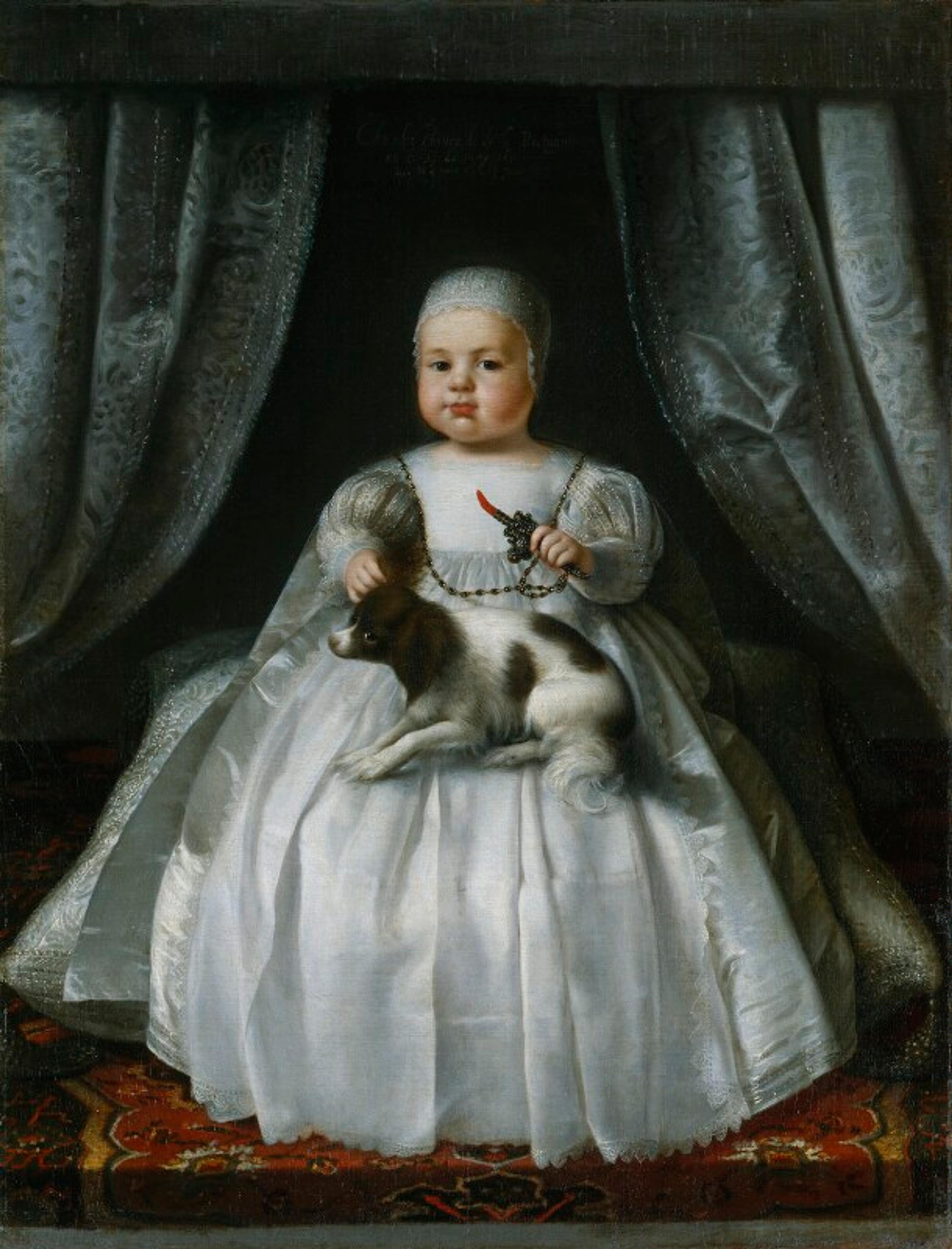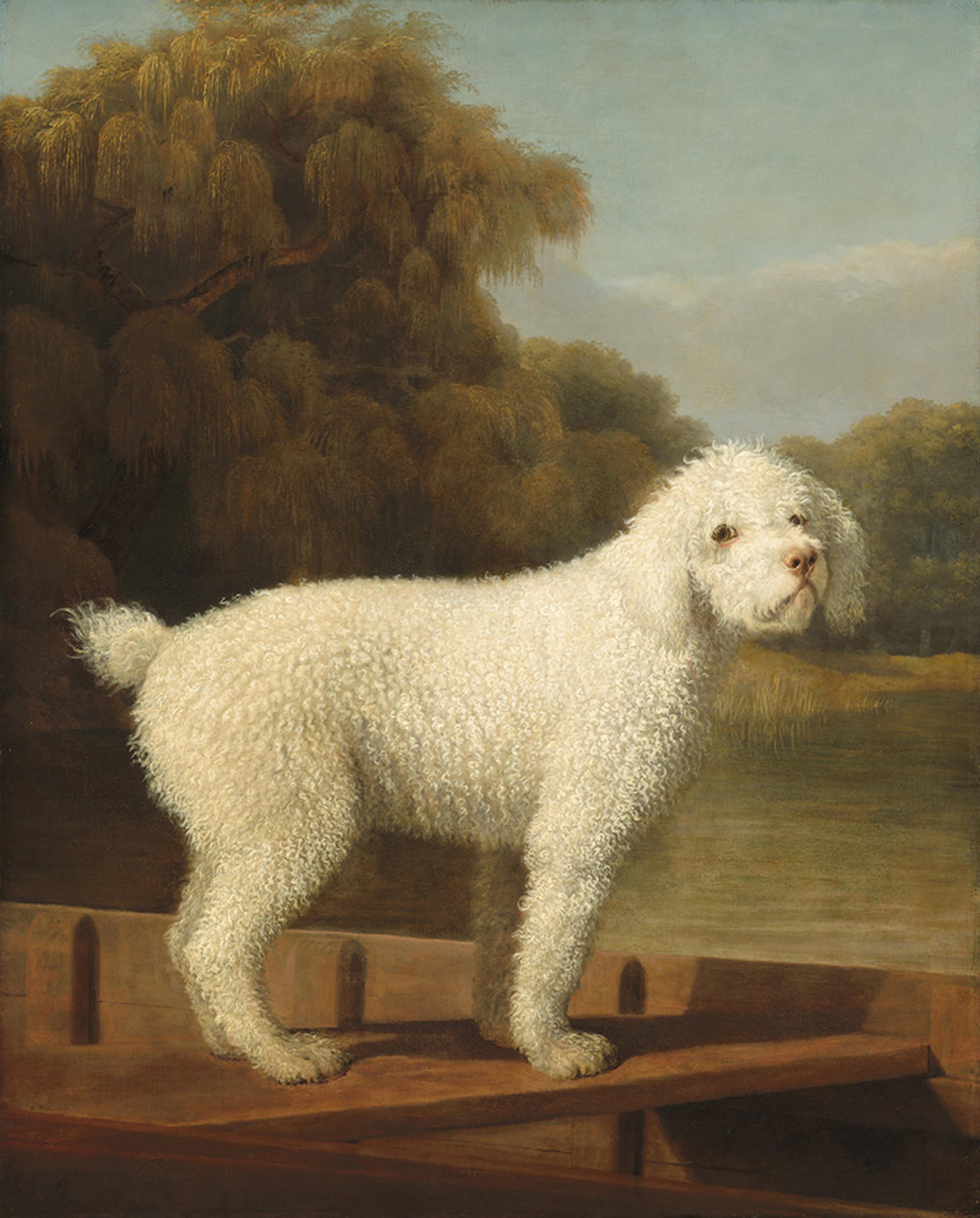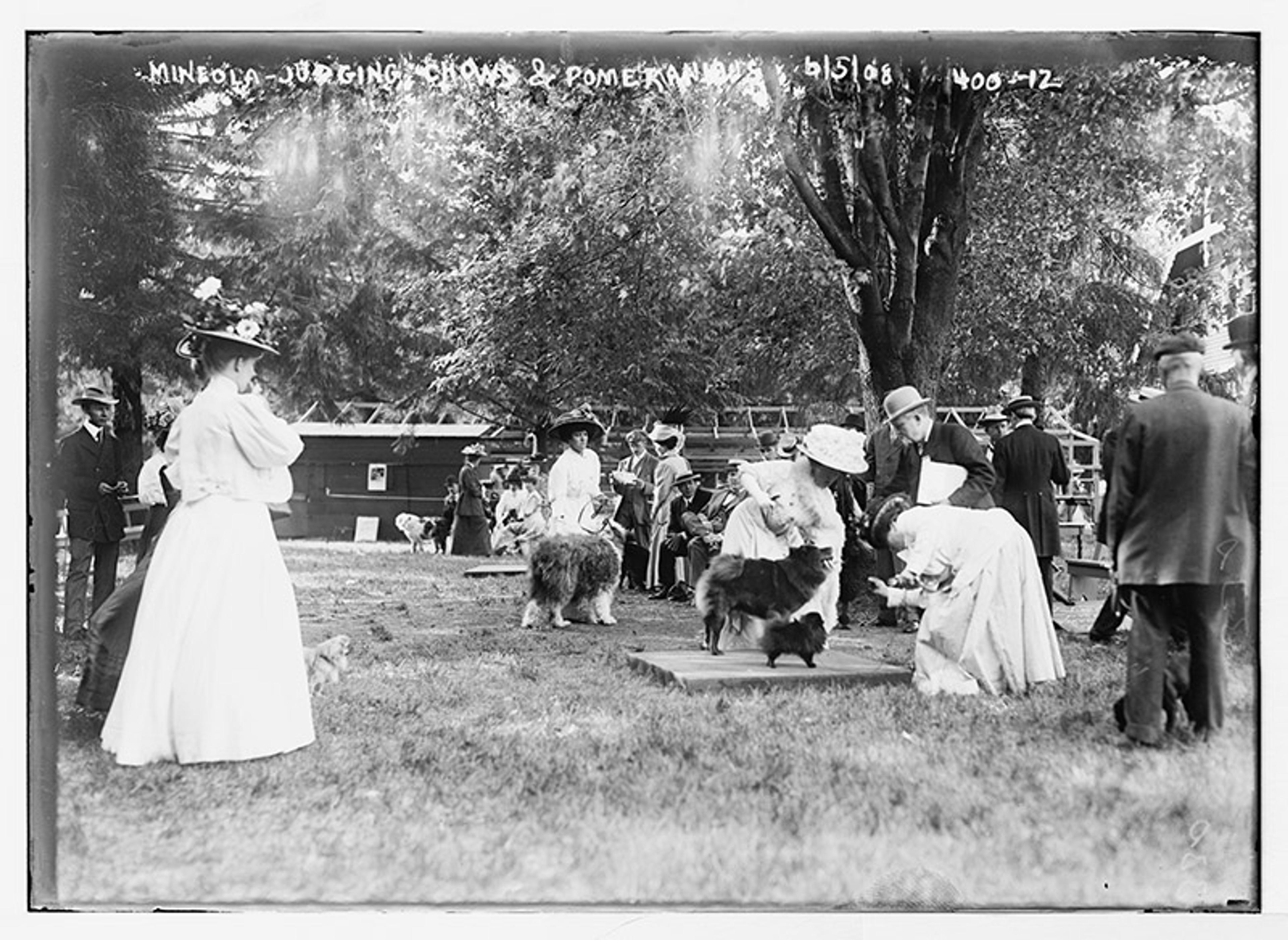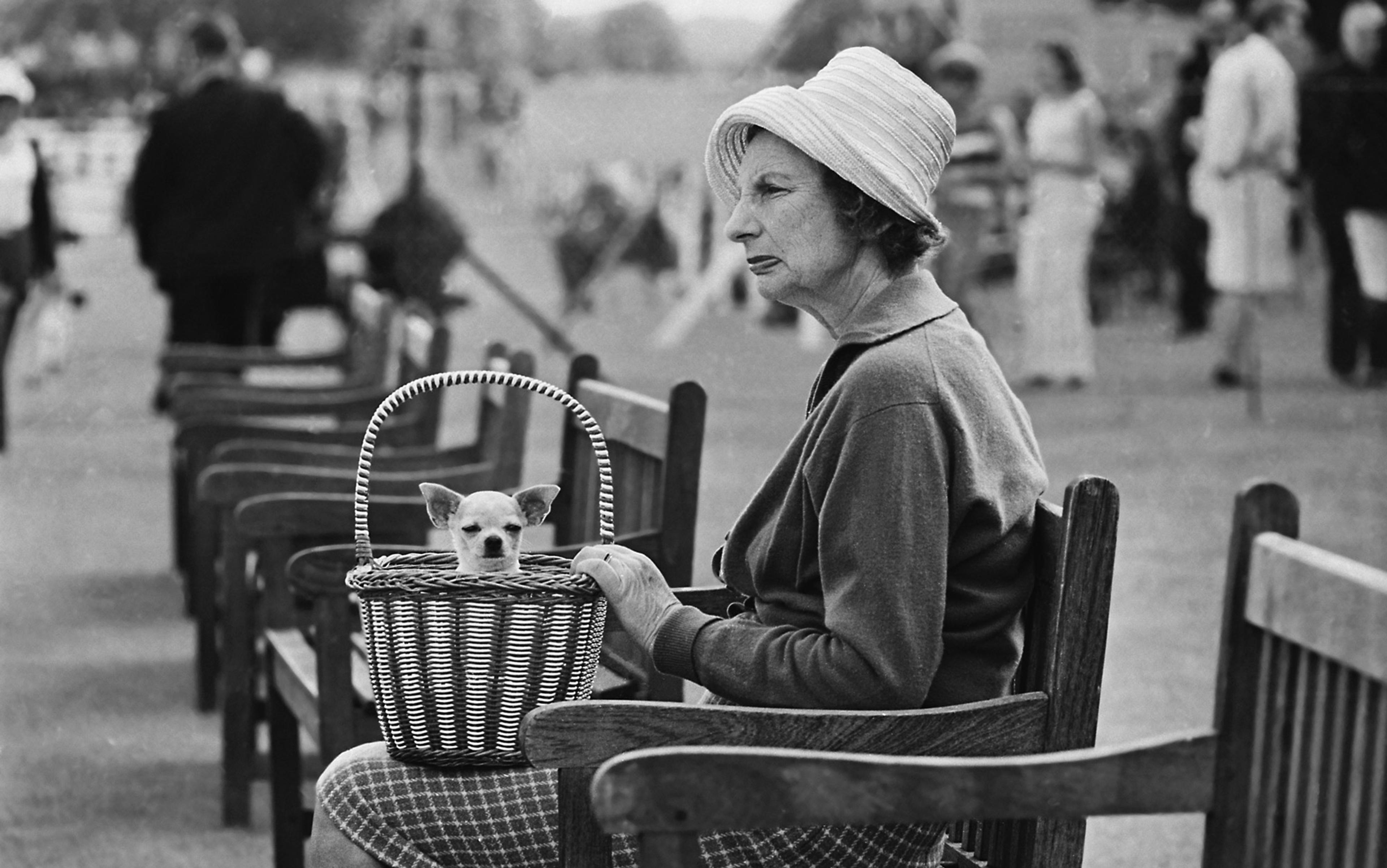Walt Disney’s animated movie Lady and the Tramp (1955) is a telling, through dogs, of a classic human tale. The privileged woman falling for a guy from the wrong side of the tracks. The golden-haired uptown girl and the ethnically ambiguous guy from the streets.
Dogs can easily represent these types due to our notions of ‘purebred’ and pedigree. After millennia of domestication, we gave our pets family trees, and named them as breeds. They acquired an identity reflecting human projection, and symbolised our own increased focus on lineage and breeding. Lady is purebred, Tramp is a mutt.
But these identities are human inventions, and say more about our own use of dogs than the animals themselves. People’s desire to have pets as well as working animals is old, and the line blurs further back in history. Our tendency for fondness toward domesticated creatures means we’re in a grey area with animals like horses and dogs that are somewhere between ‘livestock’ and ‘pet’.
Dogs have been domesticated for thousands of years, since the first wolves crept close to a campfire. One of the features of domesticated animals is that they develop distinctive characteristics, such as floppy ears. (The same thing happens with domesticated foxes). This seems to happen regardless of human intent, but some of the other elements of modern dogs (small size, or fur colours) are the result of breeder selection. Dogs evolved with our assistance to do different jobs, to serve us in different ways.
The growing wealth of mercantile Europe in the early modern period allowed for more pets: and also the money for paintings that let us to see them and their role in the family. Small furry companions start appearing at the hip of aristocrats in Elizabethan art. They symbolised the wealth of keeping such playthings – a dog too small to be a working animal. Later, we see little brown and white spaniels making regular appearances in Dutch Old Masters. Their presence shows their visibility in the household – and the popularity of small dogs whose main purpose would be companion as much than worker.

Portrait of a very young King Charles II of England with a spaniel, c1630, unknown artist. Courtesy the NPG London
During the English Civil War, Prince Rupert of the Rhine rode into battle accompanied by his dog, Boy. Referred to as a poodle, this was perhaps one of the first celebrity dogs. Boy featured in broadsides, and was regarded by some as having magic powers. He was also depicted with long flowing hair, like his Cavalier master.
Nonetheless, the idea of purebred dogs came in quite late (and, much like ethnicity claims, can be contested). We shifted from selecting for skills to selecting for phenotype. These, of course, stand in for each other: we know a bloodhound by its appearance, and we know what bloodhounds are good for.
Dog-fancying, and the arrival of pedigrees, came with the heady mix of science and sentimentality that marked the Victorian era. As a rising middle class started to focus on their own family trees, creating an ‘elite’ from new money, so dogs started to be classified too.

White Poodle in a Punt (c1780) by George Stubbs. Courtesy the National Gallery of Art, Washington
The Kennel Club in Britain was founded in 1873; the American Kennel Club (AKC) in 1884. Crufts, the dog show, started in 1891. Once a breed was defined, the bloodline would be closed. A dog was only of a breed if its parents were in a breed register, and the parallels with the social register are pretty clear.
Some breed fans still hope to find a more ancient lineage, to believe that their dogs come from a much older tradition than a bunch of Victorian pet buffs. As people hope to find luminaries in their own family tree, they want their dog to symbolise a link to antiquity. People also DNA-test mixed-breed dogs, to establish their ancestry.
This use of DNA testing to trace breed lineages is possible specifically because of the close breeding of pedigree animals. Through the mid-20th century, ‘line breeding’ (encouraging mating between close relatives) was pursued by some kennels, to reinforce the characteristics they sought. This had the result of creating a lot of heavily inbred animals, with multiplying genetic problems.
The popularity of poodles leaped from 2,165 in 1949 to 58,000 in 1959
One of the clearest cases of this was the poodle. A specific genetic bottleneck in the breed is traced to a champion dog named Annsown Sir Gay, born in 1949. A prolific stud, he fathered 21 litters, containing more show winners. Other kennels were keen to have dogs from this line, spreading their genetic influence through the breed. One son, Gay Knight, fathered a litter at the Wycliffe kennels in 1959, containing five winners.
This litter’s genes are still found today – identified in genetic analysis as ‘x per cent Wycliffe’ – and pedigree poodles in the UK, the US and Australia all share this heritage. By the 1990s, registered poodles had more than 40 per cent of their genes from this Wycliffe bottleneck, and for black poodles it is as high as 50 per cent. This was partly due to the rocketing postwar popularity of poodles, with AKC registrations leaping from 2,165 in 1949 to 58,000 in 1959. Kennels were producing multiple litters to meet demand (today, there are more than 250,000 poodles registered in the US annually).
Poodles are not the only dogs to have genetic issues caused by selective breeding. But their distinctive appearance and morphology most keenly demonstrates the changing fashions of pedigree animals. Poodles have their origins as gundogs, retrieving game birds. They are smart and good swimmers, with their tight-curled hair offering insulation in water.
Few other dogs’ presentation has changed as much as the poodle, representing an evolving aesthetic, as well as technological advances. Through the early 20th century, it was common for poodles to be shown ‘corded’, essentially with dreadlocks. A picture of a show poodle from the late 19th century looks like Cousin Itt.
The ‘continental cut’ (the one you associate with poodles, with hair on the head and shoulders, a shaved midsection, pompoms at the ankles and the tail tip, and fur pads on each hip) looks straggly in early pics but, with the development of electric clippers and blow-drying, emerged to symbolise the epitome of effete pedigree animals. The model of the trimmed poodle is such a recognisable silhouette that it became a fashion motif in the 1950s, and recurs in textiles, prints and logos.
The fashionable aesthetic of other dogs has also evolved. See the trend in recent years for pug-type dogs, with their short faces – a state known as brachycephalic. They are prone to respiratory problems due to this skull shape. However, what they fulfil for humans is a representation of neoteny.
‘Neoteny’ refers to the retention of juvenile traits in an adult (both phenotypically and behaviourally). It’s a characteristic you can identify in any animal that elicits a human response of ‘cute!!’ Proportionally large eyes, facing forward, and a round face. Much like a human baby. The dog looks vulnerable, and in need of our care. We look at their little faces and it triggers our nurture response. These animals are also easier for us to anthropomorphise, and onto them we project our desires. Today’s pet is likely to be named Bella or Jack (also names popular for children), rather than yesterday’s Queenie or Rex.
The French bulldog, which has become extremely popular in the past decade, fulfils the neoteny characteristic – as well as being a small animal, thus easy for apartment-dwellers to keep. The singer Lady Gaga’s dogs – which were stolen when her dogwalker was shot in 2021 – are French bulldogs. Thefts are such a threat that owners worry about taking their dogs out in public. The breed is so popular that puppies regularly go for thousands of dollars. They symbolise cuteness but the cash value makes them a luxury good.
In the English bulldog, 85 per cent of deliveries need a caesarean, as the puppies’ heads are too large
Although the prices are new (and spiralling partly due to the COVID-19 pandemic demand for puppies), the sentiment is not. In The Theory of the Leisure Class (1899), the economist Thorstein Veblen wrote of what he saw as overbred lapdogs:
The commercial value of canine monstrosities, such as the prevailing styles of pet dogs both for men’s and women’s use, rests on their high cost of production, and their value to their owners lies chiefly in their utility as items of conspicuous consumption.
Physical distortion caused by breeding has led to extremes in the English bulldog, where 85 per cent of deliveries require a caesarean section, as the puppies’ heads are too large for the mother’s pelvis. These dogs could never have evolved this way in nature, they are entirely manmade, representing our domination over the breed.

Judging chow chows and Pomerainians at the Mineola Dog Show, c1908. Courtesy the Library of Congress
Different breeds move in and out of fashion, as demonstrated by the AKC’s popular breeds list (which accounts for registered pedigree dogs). In the 1920s, the chow chow was popular, then fell out of top-10 lists for decades. In Art Deco prints, stylised images show relatively obscure breeds such as the borzoi and the saluki, with their lean and angular frames matching the fashionable silhouette.
One stalwart of the list is the Labrador retriever, coming in at number one for more than 30 years. Originally a gundog, it is a symbol of loyalty and stability – and, along with the golden retriever, a totemic family pet. Labradors are commonly working animals, too – as guide dogs, police search-and-rescue, and explosive- and drug-detection – which contributes to the numbers registered. But even they suffer from some of the genetic issues of inbreeding: hip dysplasia is common in the breed, as it is in other larger dogs, and Labradors are particularly prone to cancer.
Popularity of breeds is also heavily influenced by culture. Rin Tin Tin made the German shepherd a mainstream choice of pet after he first appeared in silent pictures in the 1920s. Lassie’s movies and TV shows brought the collie into everyone’s living room, and it was soon in higher demand as a family pet. The various 101 Dalmatians movies have caused a rush on those puppies, followed by an increase in Dalmatians being left at shelters, as the novelty value wore off. The choice of each of these dogs is a cultural message from its owners. Breeds became brands in terms of consumer preference.
We signal our class, our preferences and our personality through our choice of dog as a pet. By choosing a Labrador, an owner may be signalling their suburban lifestyle or traditional values. The semiotics of dog ownership relates to both our communication with the dog, as we name and treat it, and our communication to the rest of society of what our possession means. And this meaning has changed through the co-evolution of our relationship with animals, much as dogs themselves are sometimes regarded as having domesticated themselves in their affiliation with humans. That it was not our choice but theirs.
The story we tell ourselves that dogs choose our lifestyles or prefer the things that we want (how fortunate, to have a pet that shares our preferences!) is reflected even in how dogs are fed. In recent years, there has been a trend towards raw food for pets. Some feed their dogs organic, or even attempt to make their pets eat human diets, such as vegan. These owners show both anthropomorphic desire and social status aspiration, as well as some degree of delusion. Those who feed basic pet food are shamed for not caring about their pets. (These ratcheted expectations obviously apply more in some social milieux than others.)
You’ve probably heard of the puppy scam. It’s one of the older internet cons to have flourished in a market where it became semi-normal for people to purchase living animals over the internet. The buyer sees an ad online and sends payment for their puppy. In a lot of online rip-offs, the ‘seller’ would just disappear with the cash at this point. But the puppy scam usually goes further. Another email. The puppy suddenly needs medical care. Please send money. A special crate for its transport. Oh no, the puppy is stuck on the runway at Hartsfield-Jackson airport, and Delta is demanding an extra transport fee! The saga continues until the ‘buyer’ wises up. But, like dating scams, it works because people are emotionally, as well as financially, invested.
A final shift over the past quarter-century has been the message of ‘rescuing’ animals. That it is more virtuous to get a pet from a shelter than to buy from a breeder. The messaging that animals are needlessly euthanised, and could have been saved, has been very effective. However, the argument that it is better to adopt a dog rather than to buy one from a breeder overlooks the fact that the shelter population has dropped dramatically since the 1970s.
There are, in fact, not enough dogs in shelters to meet demand, if every would-be dog owner went there for a pet. This is the result of highly effective spay/neuter messaging, and surely an outcome that animal welfare advocates should celebrate. Microchipping means more lost dogs find their way home. The family dog having surprise puppies is no longer a regular occurrence, and nor are ‘free to good home’ ads pinned on the board at the supermarket the way they were 30 years ago.
There are more people clamouring to adopt than there are dogs available
The fact that there is a market for dogs online shows how much they are part of the market, although our rhetoric of ‘family members’ and ‘fur babies’ makes it seem as though they are other than a consumer good.
However, it has instead created perverse market incentives. Another group, the ‘rescue’, has grown exponentially in recent decades. While the terms ‘shelter’ and ‘rescue’ are often used interchangeably, they are not. The shelter is the municipal pound, or a non-profit organisation like the ASPCA or the RSPCA. Rescues are private organisations that find homes for dogs, often focusing on a particular breed. Rescues are known for saving dogs from kill shelters, and this work is laudable.
But there is a grey area between rescuing and trading. In the US, rescues in the Northeast, where pet demand is high, are known to buy animals from shelters in the South, and transport them to where the buyers are. That some rescues essentially ‘clean out’ shelter stock so others can’t find pets is a knock-on effect. The ‘adopt, don’t shop’ message implies that it is easy enough to adopt a dog, though plenty of potential owners have found themselves stymied by the increasing demands imposed by rescue groups (home checks, references, even credit reports). Rescues can make these demands precisely because there are more people clamouring to adopt than there are dogs available.
Possession of a fashionable breed sends a message that you’re both on-trend and able to afford a luxury good
The symbolism of the ‘rescue dog’ is that the owners can feel virtuous that they pulled this dog away from the hell of impending death at the pound, or the terrible life of a stray. In fact, because there just aren’t enough dogs at the pound to fulfil the market, some rescues even buy dogs from breeders – especially breed-specific rescues. While they might present this as ‘saving’ a dog from life with a breeder, they are in fact bidding up the price for dogs at auction – and, as anyone with a clue of economics would expect, incentivising more people to breed dogs. The price the rescues ask for dogs (whether they label it as a ‘rehoming fee’ or whatever, it is a sale price) has climbed with demand, with some asking four figures for these allegedly unwanted dogs.
Yet for the end owner (or consumer) of the dog, having the rescue serve as a middleman means they don’t feel they have bought from a puppy mill. It’s a win-win for the dog owner: they get the particular breed they want by going to a specialised rescue, and they get the moral value of ‘not having bought from a breeder’. Possession of a fashionable breed sends a message that you’re both on-trend and able to afford a luxury good. Claiming that the dog is a rescue is also a way for us to signal our goodness.
A darker side to the rising prices and high demand for dogs is dog theft and grey market trade. This has accelerated through the pandemic, and there is an international traffic in animals, which allows their provenance to be obscured. Due to the high demand for dogs in richer nations, it has become normalised to ‘rescue’ (ie, purchase and have shipped to you) a dog from Romania, Cyprus or somewhere else. The push to shut down puppy mills and pet-store sales in the rich West has simply outsourced the production to poorer nations, with laxer laws, where the products are imported as ‘rescues’. As with other industries, we want the end consumer good, but we don’t like the production process: so we push that off to somewhere else in the world.
Our daily lives with dogs have also changed, reflecting their increased monetary (and emotional) value. Leash laws – and, even in their absence, a change of culture – means dogs aren’t wandering around the suburbs as they did at midcentury. Poop-scooping regulations serve as a way to manage dogs in urban spaces, but also underline the idea that they are pampered pets.
The expanding middle class through the 20th century brought us a model of the nuclear family with the dog as pet, often a mutt acquired for free and raised with the lackadaisical affection of children (Dad, can we keep him?) Since then, the industry around dogs (pet food, pet toys, pet clothing, pet everything) has grown into a market behemoth.
The cost of dogs also leads us to treat them more as beloved family members than animals (the cringeworthy term ‘fur babies’ is proof enough of that). Today’s pets are kept close to their owners. Snoopy these days would have no dog house in the yard, but a bed in the living room (if he wasn’t curled up on Charlie Brown’s pillow).
Dogs are, in a Barthesian sense, the signifier and the signified. They straddle a line between self and other (in the ways we have ‘humanised’ them, yet use them as objects). If I tell you someone has a pet pitbull, you might make assumptions about this person – very different from the assumptions you’d make about an acquaintance with a Yorkshire terrier. Breeds have accrued associations, from their presence in popular culture, to their phenotype, to our familiarity with them in daily life. Simply owning a dog is an exercise in expressing our cultural values, as our furry totem reflects them to the world.






